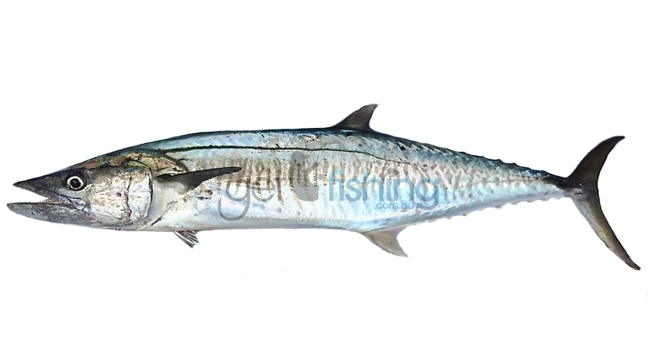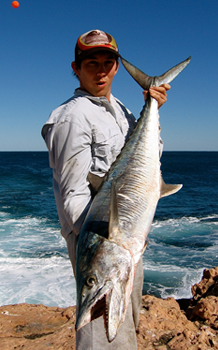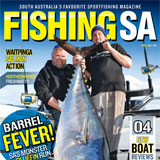Species ID
View AllSpanish Mackerel

Spanish mackerel, also known as Narrow-barred mackerel, are a highly sought after table fish and prized sport fish on light tackle. They are large-growing speedsters with razor sharp teeth and long narrow bodies adapted to a predatory life in the open ocean. Overall they are silver in colour and iridescent blue-grey above the lateral line. They have a series of narrow, wavy vertical bars the body that become more like elongate blotches rear of the anal fin. When hooked they display blistering high-speed runs and jaw-dropping aerobatics, particularly when attacking a skipped bait or surface lure or when pursued by sharks.
Other names
Narrow-barred Mackerel, Narrow-barred Spanish Mackerel, Spaniard, Banded Tuna, Giant Mackerel, King Mackerel, Kingfish, Leaping Tuna, Macko, Mackie, Narrow-banded Spanish-mackerel, Narrow-bar, Narrowedbarred Mackerel, Narrowedbarred Spanish Mackerel, Tanguigue
Common size
5-12kg
Related species
Grey (Broad barred) mackerel, Shark mackerel, Spotted mackerel
Lifespan
At least 22 years
Habitat
Spaniards are a pelagic species that frequent reef habitats between deeper oceanic waters and the mainland. They are commonly found around offshore and coastal reef systems, islands, headlands, wrecks and bays. In winter they are somewhat restricted to the top half of the country whereas in summer they push south with the warmer currents and eddies.
Reproduction
Spanish Mackerel mature at approximately 80cm and grow to about 240cm and 60kg in weight. In Australian waters spawning occurs in the open ocean along reef edges when water temperatures are highest. Studies indicate that there are three separate genetic stocks in Australia; Papua New Guinea to East coast, Torres Straight, and Papua New Guinea to WA.
Diet
Spanish mackerel are carnivores that predominantly feed on a variety of baitfish and to a lesser extent squid.
Catch care
Spanish mackerel are a fantastic fish that should be chilled immediately for best results. They are regarded as one of the best eating fish in the north so if you’re going to take one for a feed look after it properly. Immediate bleeding and placing in a salty ice slurry will enhance the flesh.
Filleting
See our ‘Fillet Spanish Mackerel‘ video.
Information courtesy of Department Of Fisheries WA, DPIF NT and DAFF QLD.
Spanish mackerel are widely distributed across the Indo-West Pacific region and range as far as the east coast of Africa and east as far as the Fiji Islands. In Australia they follow the warmer tropical to sub-tropical waters between the continental shelf and the mainland. They range between Augusta in Western Australia northwards to the east coast of Victoria.
5 stars. Spanish mackerel are a popular commercial and recreational target due to their high yield and popularity on the table. They are high in fats and oils such as omega 3 making them a healthy and tasty choice.
Larger specimens produce nice-sized cutlets or alternatively they are easy to fillet and bone. They are a very versatile fish when it comes to cooking and can be fried, grilled, baked and are fantastic barbecued or smoked. They are a hit in simple and complex dishes and no doubt will be fantastic no matter how you cook it!

- Are from the family Scombridae (mackerels, tunas, and bonitos)
- Can grow up to 2.4m in length and 60kg in weight
- They are the largest Mackerel species in Australian waters
- The number of bars on the body increases with the length of the fish
- Global annual catch exceeds 200,000 tonnes
- The oldest Spanish mackerel in Australia have been found in WA
- Good eating





























